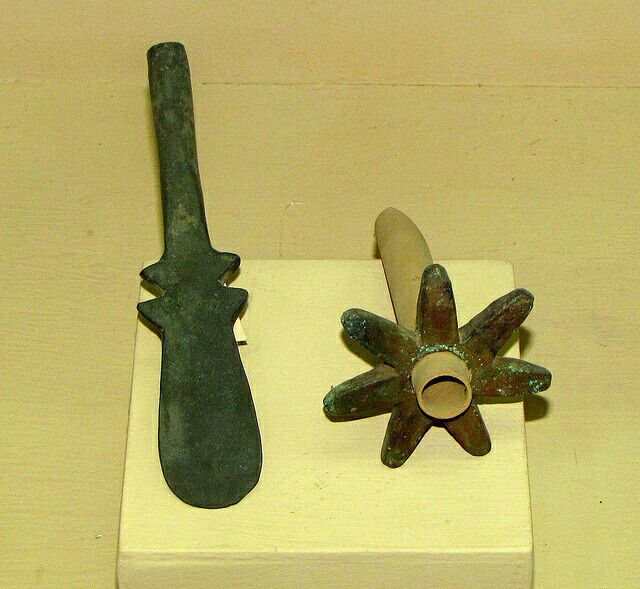It took humanity approximately 4 times longer to switch from copper swords to steel swords than it took to switch from steel swords to nuclear bombs

It took humanity approximately 4 times longer to switch from copper swords to steel swords than it took to switch from steel swords to nuclear bombs.

When we examine the advancement of weaponry throughout history, the transition from one material to another can provide valuable insights into the progress made by humanity. One such fascinating fact is that it took approximately four times longer for humanity to switch from copper swords to steel swords than it did to transition from steel swords to nuclear bombs.
The switch from copper swords to steel swords marked a significant technological leap in weaponry. Copper swords were widely used in ancient times due to the availability and workability of copper. However, despite being effective in close combat, copper swords had their limitations. They were relatively soft, making them susceptible to bending and chipping during battles. This prompted the need for an improved material that could withstand the rigors of warfare.

The transition from copper swords to steel swords was a gradual process that spanned several centuries. Steel, an alloy of iron and carbon, proved to be a significant game-changer. It offered superior strength, durability, and an ability to hold a sharp edge. However, the development of the necessary technologies and techniques to produce high-quality steel was a time-consuming endeavor.
During the transition from copper to steel, societies needed to overcome various technological challenges. The process of smelting iron and carbon together to create steel required advanced metallurgical knowledge and specialized furnaces. These advancements did not happen overnight but instead evolved over time as civilizations learned from trial and error, tinkering with different compositions and heat treatments.
It was not until the Iron Age, which began around 1200 BCE, that steel began to replace copper as the primary material for swords. This transition took approximately 2,000 years, highlighting the incremental nature of technological progress during that period. The advancement from copper to steel was a testament to human ingenuity and determination to improve weaponry.
In contrast, the shift from steel swords to nuclear bombs was a speedy one in the grand scheme of things. It took a mere few decades for humanity to develop and deploy nuclear weapons, forever changing the landscape of warfare and global politics. This transition was primarily driven by rapid scientific advancements, particularly in the fields of physics and chemistry.
The development of nuclear bombs can be largely attributed to the work of brilliant scientists such as Albert Einstein, Enrico Fermi, and J. Robert Oppenheimer. Their groundbreaking research on nuclear fission and chain reactions paved the way for the creation of powerful atomic weapons. The Manhattan Project, which began in 1939, saw a collaborative effort by scientists and engineers to harness the destructive potential of nuclear energy.
The transition from steel swords to nuclear bombs was propelled by the urgency and competitiveness of the geopolitical landscape during the mid-20th century. World War II acted as a catalyst for accelerated scientific advancements, with nations fiercely investing in research and development to gain the upper hand in warfare. The first nuclear bomb, codenamed “Little Boy,” was dropped on Hiroshima, Japan, in August 1945, marking the dawn of the nuclear age.
In conclusion, the transition from copper swords to steel swords took approximately 2,000 years, signifying the gradual progression of technology and metallurgical knowledge. On the other hand, the switch from steel swords to nuclear bombs happened within a few decades, driven by rapid scientific advancements and geopolitical pressures. These transitions highlight the remarkable pace at which humanity can innovate when faced with specific challenges and aspirations for power.
Tags
Share
Related Posts
Quick Links
Legal Stuff

